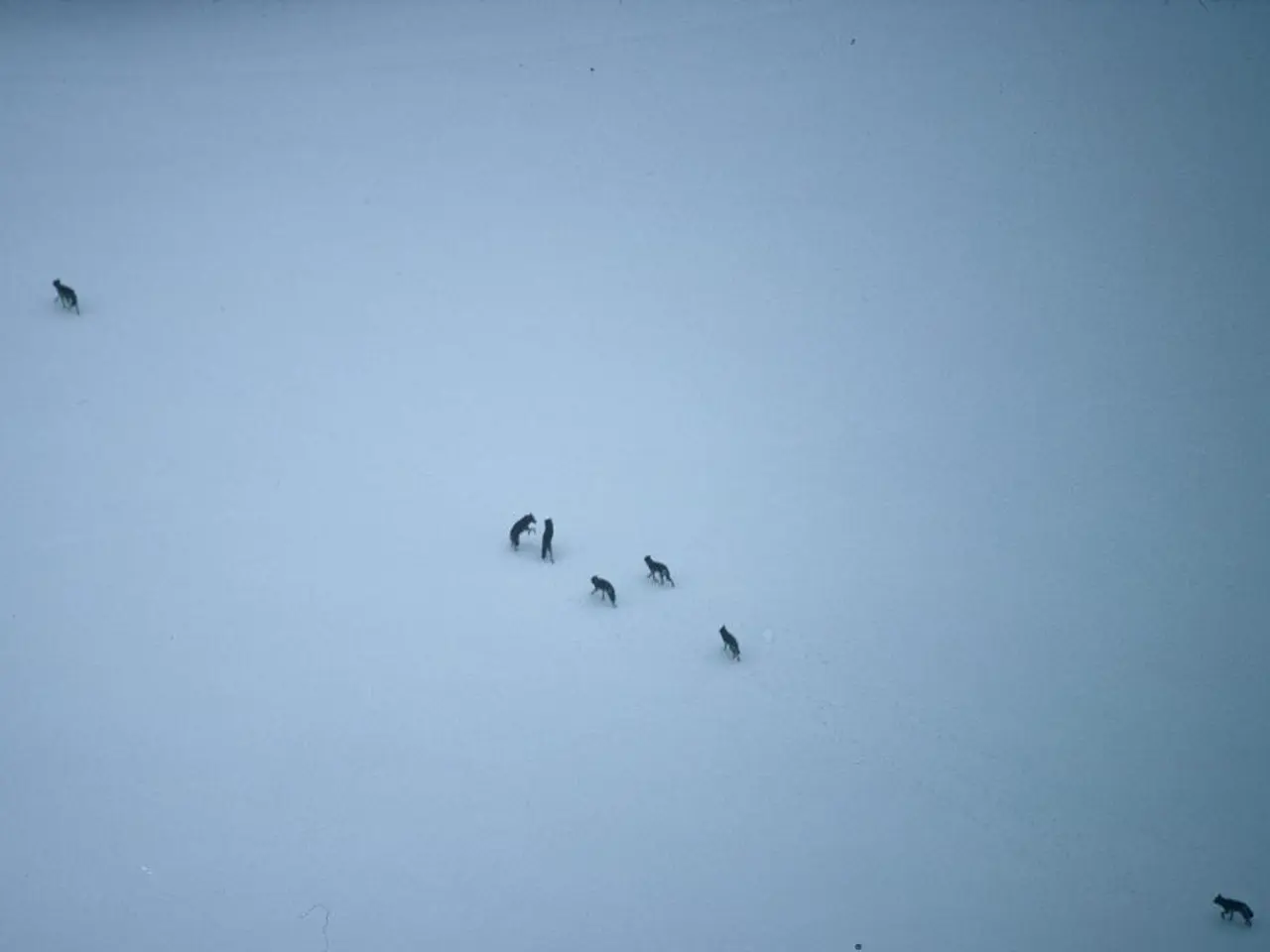Tirol Pushes for Intensified Wolf Hunting Efforts
In the picturesque landscapes of Tyrol, Austria, a contentious debate is unfolding regarding the expansion of wolf hunting. This discussion revolves around the effectiveness of wolf culling, public opinion, and the implications for wildlife management.
According to Tyrol's chief hunter, Anton Larcher, the wolf's significance as a regulating element in the natural cycle is greatly underestimated. Larcher views the wolf as a natural health police, primarily preying on sick and weak ungulates, a perspective shared by wildlife protection organisations like WWF. However, the expansion of wolf hunting in Tyrol has faced significant challenges.
Recent developments have highlighted legal obstacles that reduce the immediate effectiveness of wolf hunting as a population control tool. A court in South Tyrol temporarily halted a planned wolf cull, reflecting legal and possibly public resistance to lethal control measures. Ongoing wolf-related incidents and kills continue to be contentious, implying that hunting alone may not fully resolve human-wolf conflicts or population challenges.
The conflicting positions—some political groups like Süd-Tiroler Freiheit demanding stricter controls and others pushing back in courts—highlight divided public opinion. This often mirrors usual tensions between conservationists and rural stakeholders impacted by wolves, such as livestock farmers.
Governor Anton Mattle (ÖVP) of Tyrol wants to expand the hunting of wolves in his state with annual quotas. However, the protection center for bears, lynx, and wolves has not determined which measures are effective in reducing wolf-related damage. The centre also acknowledges that the more cautious behavior of farmers and better protection of their animals or removal from alpine pastures in case of danger also plays a role in reducing wolf-related damage.
The alpine farming with cows, sheep, and goats in Austria is economically significant and has a high tourist value. Therefore, there is great pressure from farmers and the tourism industry to do something about the wolves. Austria's Agriculture Minister Norbert Totschnig (ÖVP) believes that the EU is making progress after long negotiations regarding wolf management. The goal is to protect the 2,000 alpine pastures of Tyrol from wolves.
In 2022, around 2,000 sheep, goats, and cattle were reported as killed, injured, or missing due to wolves in Austria, compared to about 900 in the previous year. Hunting pressure has resulted in the shooting of around 35 wolves in Austria since 2023, according to statistics. However, in Germany, where the wolf population is estimated to be around 2,500, the population is not considered threatened, according to Agriculture Minister Alois Rainer (CSU).
The ongoing contestations around wolf hunting expansion in Tyrol underline the importance of incorporating legal oversight and stakeholder engagement in wildlife management policies. A future-proof strategy might involve non-lethal measures, compensation schemes for livestock losses, and adaptive monitoring along with cautious culling as a last resort to balance conservation and human interests.
Sources: 1. Klima-Wälder 2. Der Standard
- The economic and social policy of expanding wolf hunting in Tyrol, as proposed by Governor Anton Mattle, faces challenges due to legal obstacles and public resistance, highlighted by the temporary halt of a planned wolf cull in South Tyrol.
- The politics of wolf management in Austria are complex, with opposed perspectives from various stakeholders, including farmers, tourism industry, conservationists, and political groups like Süd-Tiroler Freiheit, making it crucial to consider non-lethal measures, compensation schemes, and adaptive monitoring in any future economic and social policy decisions.







